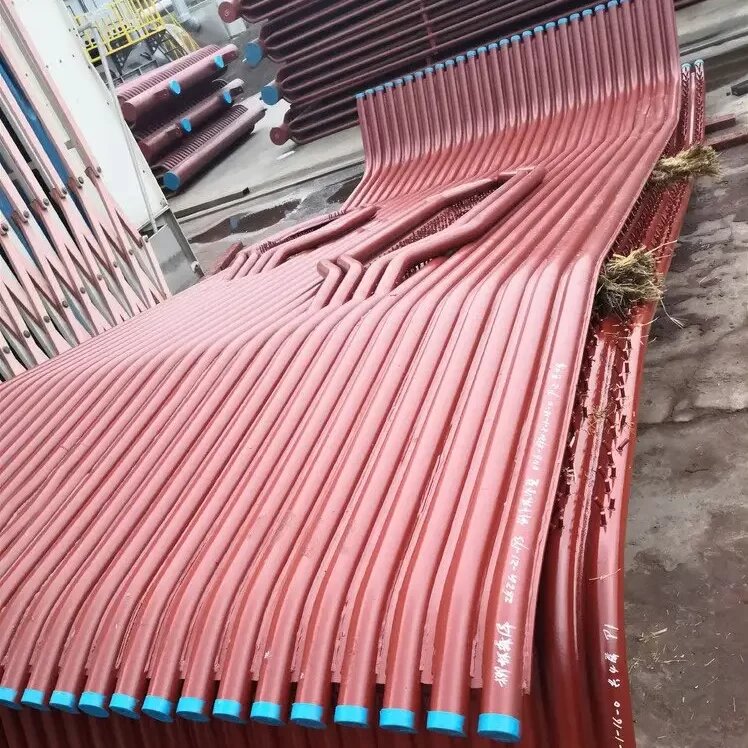What are the sizes of boiler tubes and their uses?
2024-11-09Leave a message
Introduction to the sizes of commonly used boiler tubes and their uses
Boiler tubes are key parts for converting water into steam or hot water, and are widely used in industrial production. Commonly used boiler tube sizes are: Φ25×2.5mm, Φ32×3.5mm, Φ38×3.5mm, Φ42×3.5mm, etc. According to different material and process requirements, the materials of boiler tubes are different types such as stainless steel, carbon steel, and alloy steel. Boiler tubes of different sizes can be suitable for different boiler types and working conditions. For example, Φ25×2.5mm boiler tubes are suitable for small boilers and can achieve higher working efficiency, while Φ42×3.5mm is suitable for large thermal power station boilers and is easy to process and install.
Introduction to the sizes of high-temperature and high-pressure boiler tubes
High-temperature and high-pressure boilers are a type of boiler commonly used in industrial production, and their working conditions are more stringent than those of general boilers. Therefore, the material, size and production process requirements of high-temperature and high-pressure boiler tubes are also higher. The sizes of high-temperature and high-pressure boiler tubes are: Φ51×5.5mm, Φ89×6mm, Φ108×8mm, etc. At the same time, high-temperature and high-pressure boiler tubes undergo rigorous processing and testing to ensure that they are suitable for high-strength, high-temperature and high-pressure working environments. The application range of high-temperature and high-pressure boiler tubes covers many fields such as electricity, petroleum, chemical industry, metallurgy, etc.
Introduction to the size and use of boiler-specific tubes
Boiler-specific tubes, also known as seamless steel tubes, are indispensable auxiliary equipment in boiler production. The size of boiler-specific tubes is related to factors such as boiler unit model, working pressure, temperature, and medium. Commonly used boiler-specific tube sizes are: Φ73×5mm, Φ89×6mm, Φ102×8mm, etc. Boiler-specific tubes can withstand high-temperature and high-pressure environments, and also have good corrosion resistance and mechanical properties. Boiler-specific tubes are widely used in industries such as petroleum, chemical industry, and electric power, and are also one of the important raw materials for boiler manufacturing and maintenance.
Boiler tubes are seamless tubes constructed from either carbon steel or alloy steel. They are commonly utilized in steam boilers for power generation, as well as in fossil fuel plants, industrial processing facilities, and electric power stations. Boiler tubes can be categorized as either medium-pressure or high-pressure boiler pipes.
Carbon Steel Boiler and Heat Exchanger Tube
|
Steel Standard |
Carbon steel Tube Grades |
||
|
ASTM A179 |
A179 |
|
|
|
ASTM A106 |
Grade A |
Grade B |
Grade C |
|
ASTM A192 |
A192 |
|
|
|
ASTM A210 |
A-1 |
C |
|
|
JIS G3461 |
STB340 |
STB410 |
STB510 |
Alloy Steel Boiler and Heat Exchanger Tube
|
Steel Standard |
Alloy steel Tube Grades |
||||
|
ASTM A335 |
P1 |
P2 |
P5 |
P9 |
P11 |
|
|
P12 |
P22 |
P23 |
P91 |
P92 |
|
DIN 17175 |
St35.8 |
St45.8 |
15Mo3 |
13CrMo44 |
10CrMo910 |
|
EN10216-2 |
P195GH |
P235GH |
P265GH |
16Mo3 |
14MoV6-3 |
|
|
13CrMo4-5 |
10CrMo9-10 |
|
|
|
|
JIS G3462 |
STBA 12 |
STBA 13 |
STBA 20 |
STBA 22 |
STBA 23 |
|
|
STBA 24 |
STBA 25 |
STBA 26 |
|
|


